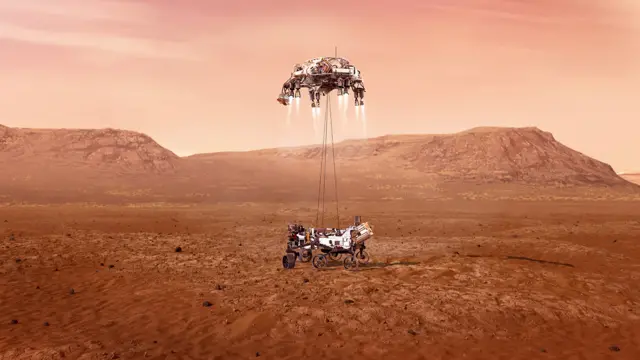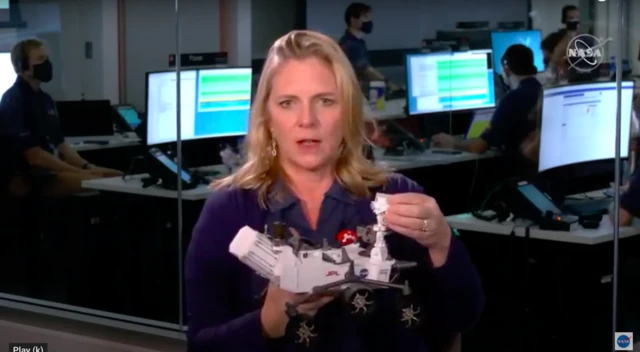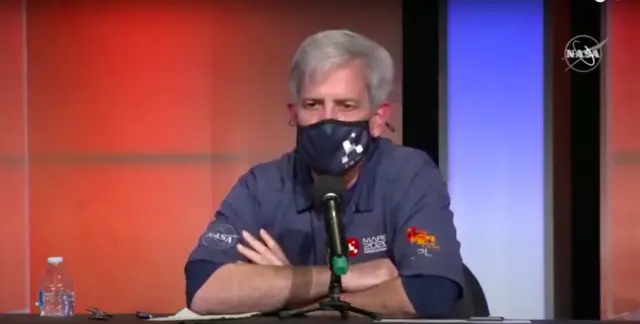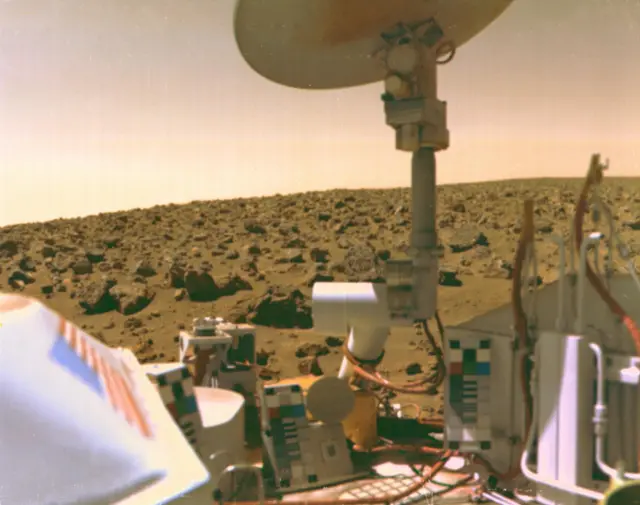That's all from uspublished at 00:28 GMT 19 February 2021
 Image source, NASA
Image source, NASAArtwork: Perseverance lands on Mars
We hope you enjoyed our live coverage of the Perseverance landing.
With the landing done, the plucky Nasa robot will begin its mission to search for signs of ancient life on Mars.
We'll continue to bring you news about the mission in the coming days and weeks. But for now, it's goodbye from Max Matza, Helen Briggs, Jonathan Amos and Paul Rincon.








